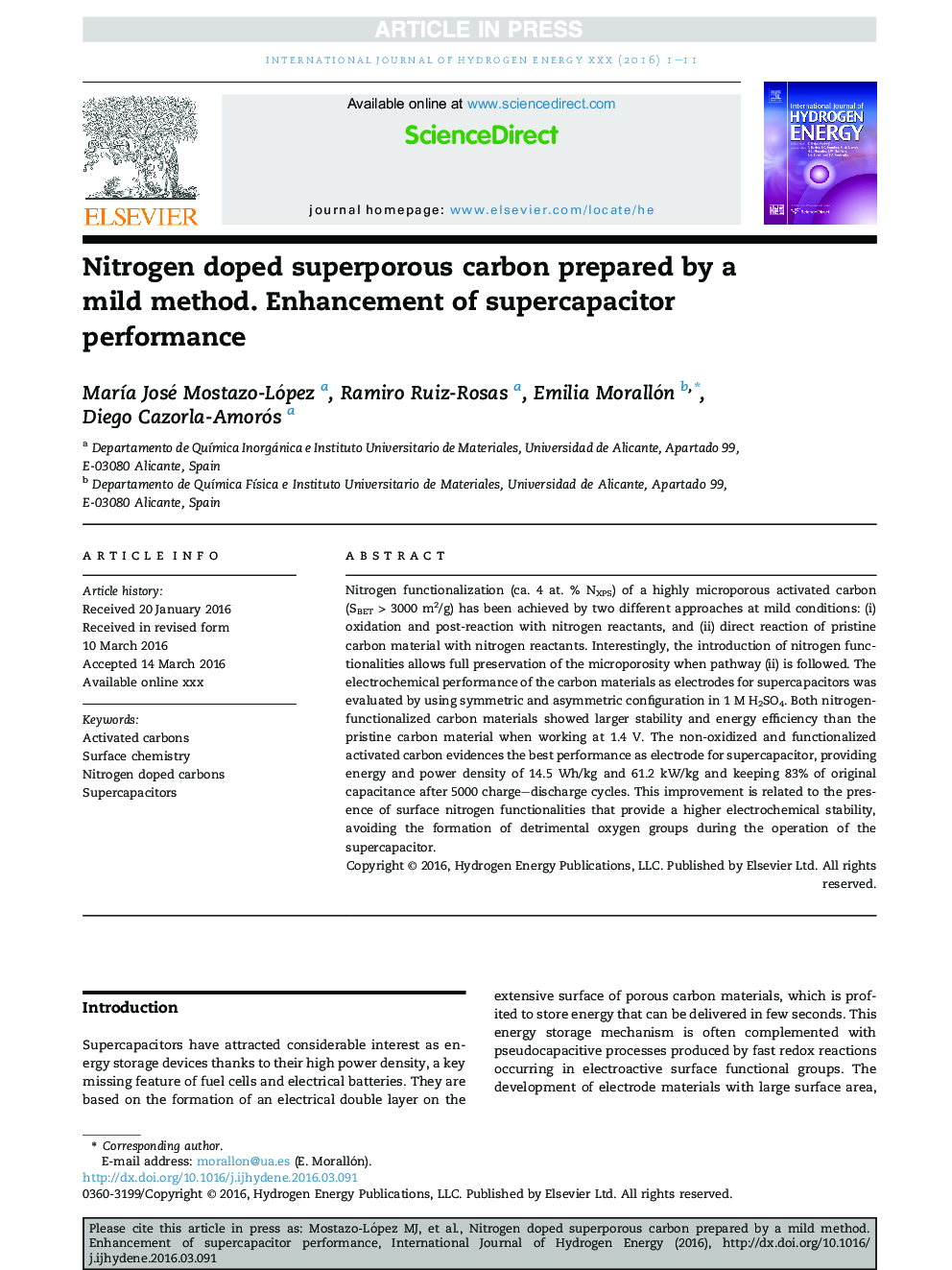| Article ID | Journal | Published Year | Pages | File Type |
|---|---|---|---|---|
| 5147465 | International Journal of Hydrogen Energy | 2016 | 11 Pages |
Abstract
Nitrogen functionalization (ca. 4Â at. % NXPS) of a highly microporous activated carbon (SBETÂ >Â 3000Â m2/g) has been achieved by two different approaches at mild conditions: (i) oxidation and post-reaction with nitrogen reactants, and (ii) direct reaction of pristine carbon material with nitrogen reactants. Interestingly, the introduction of nitrogen functionalities allows full preservation of the microporosity when pathway (ii) is followed. The electrochemical performance of the carbon materials as electrodes for supercapacitors was evaluated by using symmetric and asymmetric configuration in 1Â M H2SO4. Both nitrogen-functionalized carbon materials showed larger stability and energy efficiency than the pristine carbon material when working at 1.4Â V. The non-oxidized and functionalized activated carbon evidences the best performance as electrode for supercapacitor, providing energy and power density of 14.5Â Wh/kg and 61.2Â kW/kg and keeping 83% of original capacitance after 5000 charge-discharge cycles. This improvement is related to the presence of surface nitrogen functionalities that provide a higher electrochemical stability, avoiding the formation of detrimental oxygen groups during the operation of the supercapacitor.
Related Topics
Physical Sciences and Engineering
Chemistry
Electrochemistry
Authors
MarÃa José Mostazo-López, Ramiro Ruiz-Rosas, Emilia Morallón, Diego Cazorla-Amorós,
